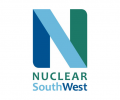
Nuclear power is a clean, sustainable energy source in itself, but also has the potential to power other innovative energy solutions.
Allan Simpson and Caroline Longman from Equilibrion share how nuclear can support Power to Liquids (PtL), and how the South West is the region ripe with opportunities to accelerate this technology.
The Net Zero challenge
Every year buses travel over 90 million miles across the South West[1], over 8 million tonnes of freight are handled at Bristol Port[2] and 8 million passengers arrive or depart from Bristol Airport[3]. All of this travel represents a significant proportion of our energy use and forms part of the hard-to-abate emissions that we will need to mitigate to deliver Net Zero. Representing 37% of global CO2 emissions[4], transport is a sector of the economy that will require significant infrastructure change to deliver Net Zero, and a wide range of technologies to enable this.
One of the main challenges with all routes to decarbonisation is the identification of suitable sources of primary energy. Wind and solar resources take up significant amounts of land and suffer from intermittency challenges, which limits their ability to support the direct decarbonisation of these sectors. Nuclear heat and electricity have an important role to play in filling this gap and providing competitive solutions to delivering Net Zero across all sectors of our economy. Equilibrion is a new company set up to address exactly this type of issue, by supporting organisations to capitalise on the opportunities provided by nuclear energy.
Power to Liquids (PtL)
‘Power to Liquids’ (PtL) processes use low carbon heat and electricity to absorb CO2 from the air and generate hydrogen from water to make a synthetic fuel. Government and industry have set ambitious targets for synthetic fuels production from PtL. Nuclear is a high capacity, 24/7 energy source that can provide the single primary energy input to support direct air capture, hydrogen production and fuel synthesis. Therefore, delivering a PtL nuclear pathway has potential to raise the ceiling on UK’s ability to deliver synthetic fuels through PtL

The diagram above provides an example of how nuclear energy can deliver synthetic aviation fuels, but this is equally applicable for other sectors such as shipping.
What we do at Equilibrion
At Equilibrion we leverage our technical, strategic and project lifecycle capabilities working across a low-carbon portfolio, including nuclear-derived hydrogen, heat and synthetic fuels. We provide specialist strategic and technical consultancy to support organisations in and outside the nuclear sector to deliver their role in the changing energy landscape.
We also develop and deliver ambitious cross-sector propositions that pave the way for the practical deployment of nuclear to support heat, transport and industrial markets. This requires a bringing together of the technologies, capabilities and stakeholders to deliver end-to-end propositions that begin with nuclear energy and end with the low carbon product for users.
Our experience with this topic tells us that the South West has an opportunity to lead the UK in the development and deployment of novel solutions that bring together the technologies required to solve this problem. This region is the focal point of the UK’s current nuclear new build capability, and as a region has the highest density of nuclear licensed sites therefore there are many opportunities to develop other nuclear technologies across these sites[5]. Current government policy positions the UK to be a world leader in the application of nuclear for the decarbonisation of hard-to-abate sectors, meaning that early projects have the potential to catalyse international growth for the companies involved.
We set up Equilibrion to make a difference. By working with organisations across the value chain to realise the delivery of market-led solutions for the use of nuclear heat and electricity, we believe that global solutions to climate change can be delivered.
To find out more about Equilibrion visit their website or follow them on LinkedIn.
[1] Bus statistics data tables – GOV.UK (www.gov.uk)
[2] Port and domestic waterborne freight statistics: data tables (PORT) – GOV.UK (www.gov.uk)
[3] Annual airport data 2022 | Civil Aviation Authority (caa.co.uk)

